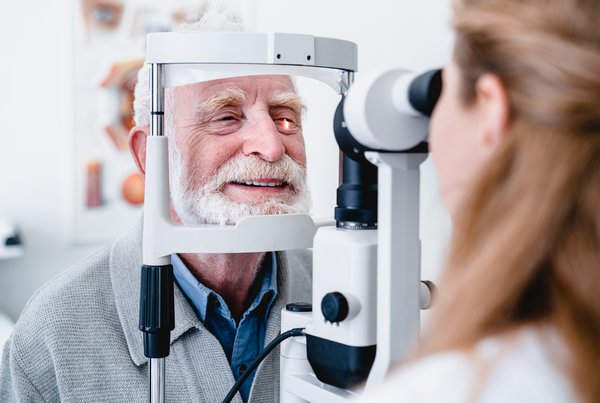Vision loss is a common occurrence with age. And while some people may be able to get by with a pair of reading glasses, others may have more serious eye conditions. One of the most common causes of vision loss for those over 60 is macular degeneration.
Macular degeneration (also known as age-related macular degeneration or AMD) is a disease that affects the macula. The macula is a part of the eye that allows you to see detail, and AMD causes cells in that part of the eye to die. AMD can impair your ability to read, drive, and do other tasks that require clear vision.
- MORE ON HEALTH & WELLNESS
- The facts about salt: how much do we really need?
- The importance of catching up on childhood vaccinations
- Four ways you could benefit from a health coach
Symptoms
AMD causes loss of central vision — what you see when you look straight ahead. There’s no pain associated with macular degeneration so you may not notice it at first. In the early stages there may be no symptoms at all. But as a progressive illness, AMD gets worse over time. The earliest symptoms may manifest as difficulty with your central vision, the need for more lighting, or difficulty recognizing faces or other detail.
Dry vs. wet AMD
There are two types of the disease, wet and dry, and they may present different symptoms. We AMD causes blurry vision, while dry AMD may first be noticed when straight lines appear crooked.
The majority of people with macular degeneration (85 to 90 percent) experience dry AMD. It is caused by the light-sensitive cells in the macula breaking down and a gradual loss of vision. Wet AMD is experienced by a smaller number of people, but it causes vision to deteriorate much more quickly. It is caused by abnormal blood vessels growing under the macula which leak fluid or blood.
Treatment
There’s no cure for macular degeneration, but it’s possible to slow the progression of the disease through treatment. The first and most important step is to see your doctor as soon as you experience any symptoms related to your central vision; the earlier you catch AMD, the more likely it is to be reversed or slowed.
Treatment will vary based on whether you have wet or dry AMD. Wet AMD treatments may involve injecting medications into your eye or using lasers to destroy blood cells. All of these therapies are designed to stop bleeding and leaking in the macula.
For dry AMD, you may be referred to a vision specialist who can help you with rehabilitation. You may also opt to have a surgery where the natural lens in your eye is replaced with an implant which restores your central vision.
The best way to prevent the impacts of AMD is to see your eye doctor for regular exams, particularly if you are over the age of 40. Those exams may identify macular degeneration before you experience any symptoms, allowing for early treatment. And since all cases of wet AMD begin as dry AMD, you may be able to prevent the more aggressive form of the disease altogether.
Information on this site is provided for informational purposes and is not meant to substitute for the advice provided by your own physician or other medical professional. You should not use the information contained herein for diagnosing or treating a health problem or disease, or prescribing any medication. If you have, or suspect that you have, a medical problem, promptly contact your health care provider.



